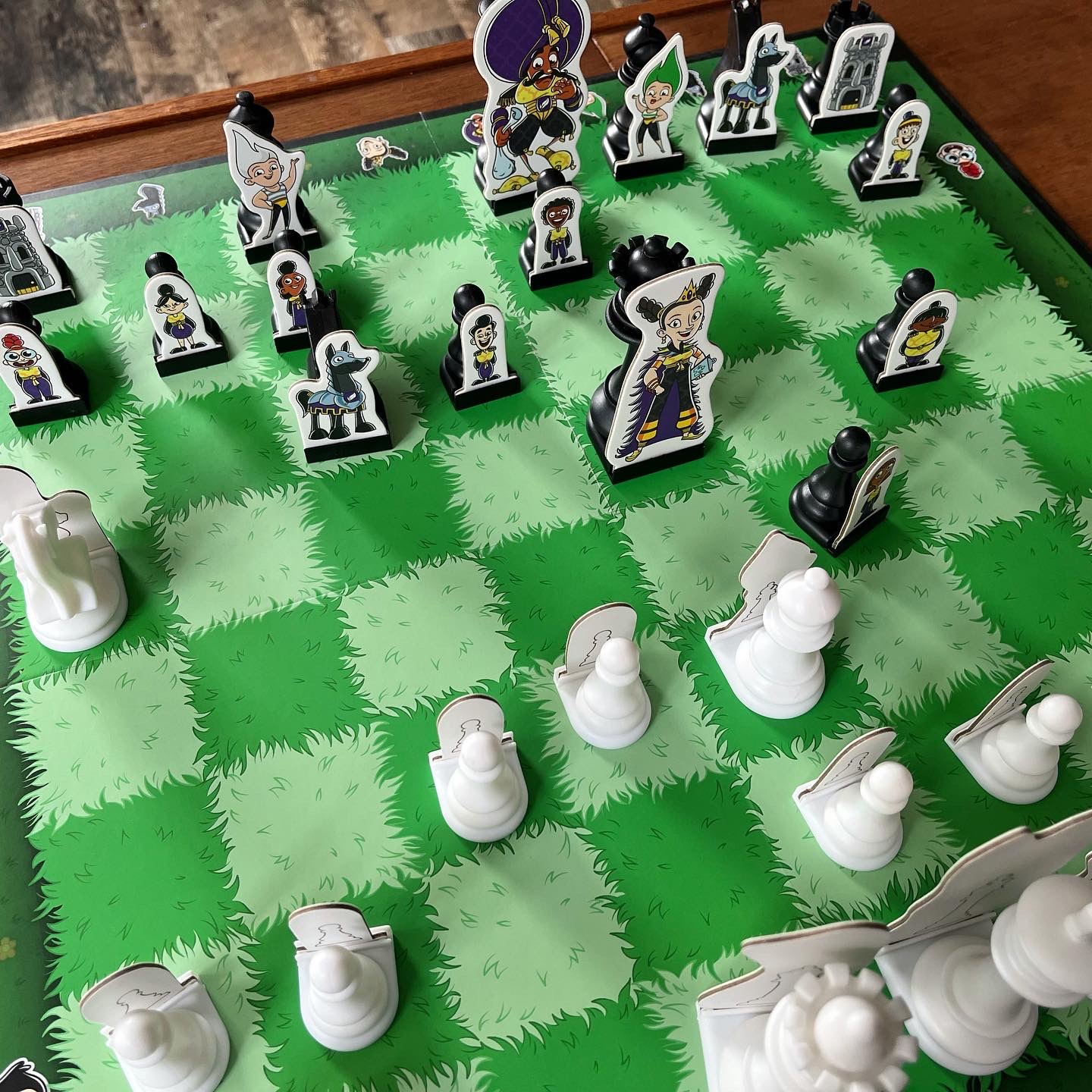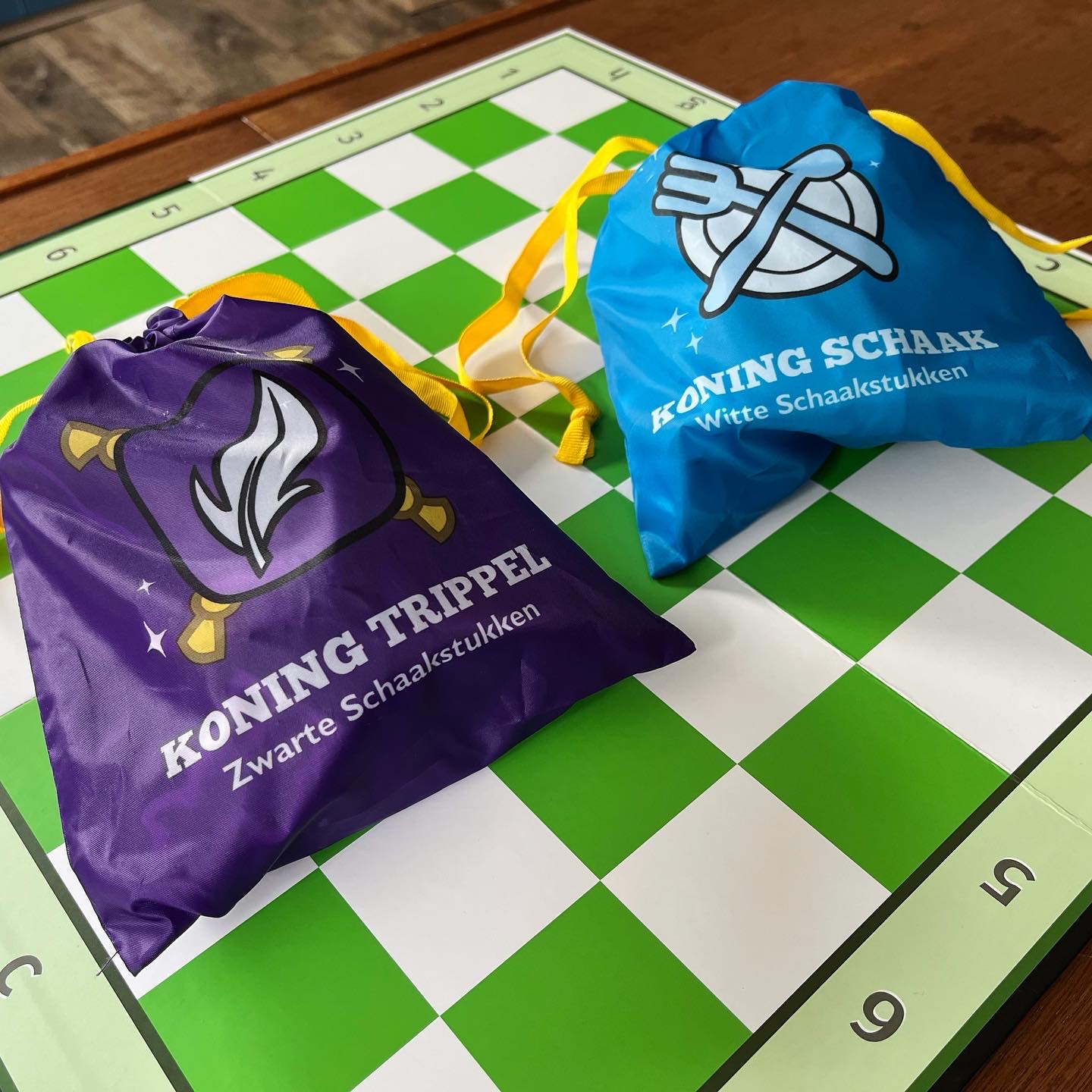The other day, we posted a picture of a roll-up chess board on Instagram – a beautiful leather mat with beautiful wooden chess pieces. Naturally, we wanted to quickly shoot a picture of that with casanova Christiaan as our (hand) model. We received several comments that the queens in the photo were in the wrong place. Blunder!
Perhaps this was a small mistake that we indeed realised ourselves after the photo was taken (and before we actually played a proper game of chess) or perhaps it was deliberately chosen as the opening move of this review. Which of the two is the truth? No one will ever know… I’ll stick with a draw.

Even though we are not beginners, a beginner’s mistake is still easily made. A solid chess education is important because the chess world is relentless. Every time we post something about chess or chess variations, we get multiple strongly worded messages. Therefore, to stand strong, you need to make certain moves in your early chess career. The perfect tool is Story Time Chess with which the very young (and old) learn by playing to make the first move to become an international grandmaster.
Chess has become increasingly popular in recent years. Many people pick up the game (again) after the Queen’s Gambit. Anyway, more games are being played ’thanks to’ COVID-19. Plenty of parents/teachers/guardians will therefore also teach certain games to their children and/or pupils, in order to teach those children to deal with their inevitable losing of a game for example. On the contrary, some players want a skilled opponent. How to explain chess properly? Story Time Chess is an educational chess game/chess set/board game that teaches young children to play chess with the help of a colourfully illustrated storybook full of funny illustrations and stories and with various games and tasks. The box contains a double-sided chess board (with a traditional chess board and an illustrated chess board), the traditional chess pieces, the book, very sturdy cardboard characters from the story that you can insert into the chess pieces and a set of sturdy cardboard tokens.
Traditional chess has many different pieces with their own rules and quirks. Introducing all the pieces at once might be overwhelming for a young, inexperienced player. The picture book consists of several chapters, and in each chapter players are introduced to one of the chess pieces. In each chapter, they therefore get to know a chess piece (and the matching character from the story) better. As a result, by getting to know the chess pieces piece by piece (hehe), the amount of new information remains limited and manageable. The young players are being read a story per chapter, and older children ers can of course read this story by themselves. In the story, the characters/pieces are confronted with a situation or problem that also explains the rules of a chess piece. For example, gluttonous King Chess can only walk one step/square per move because his pockets are full of food. His friend/enemy King is afraid of everything that is not a pillow and therefore treads very carefully through the grass. A funny background has been written for each chess piece to match their rule.
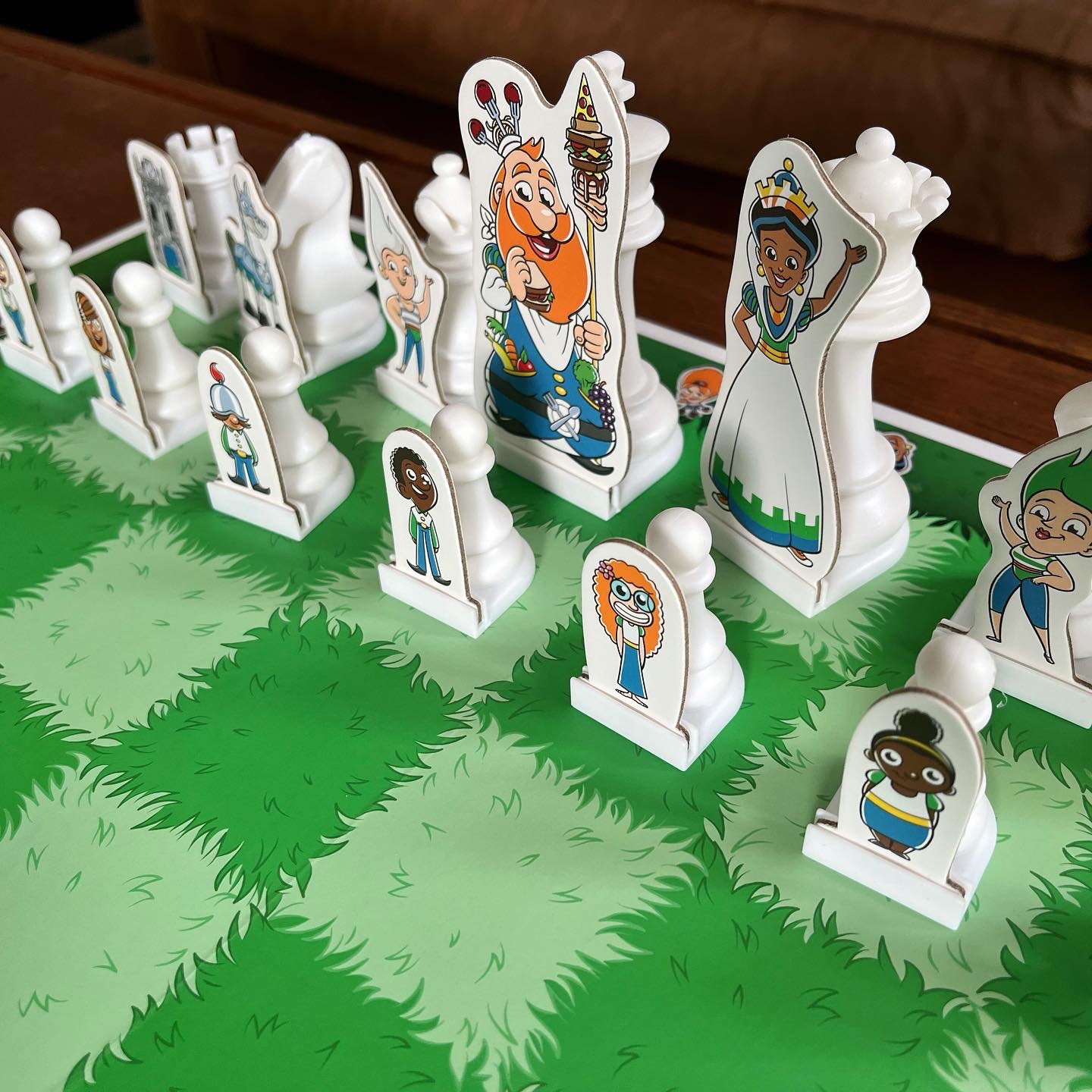
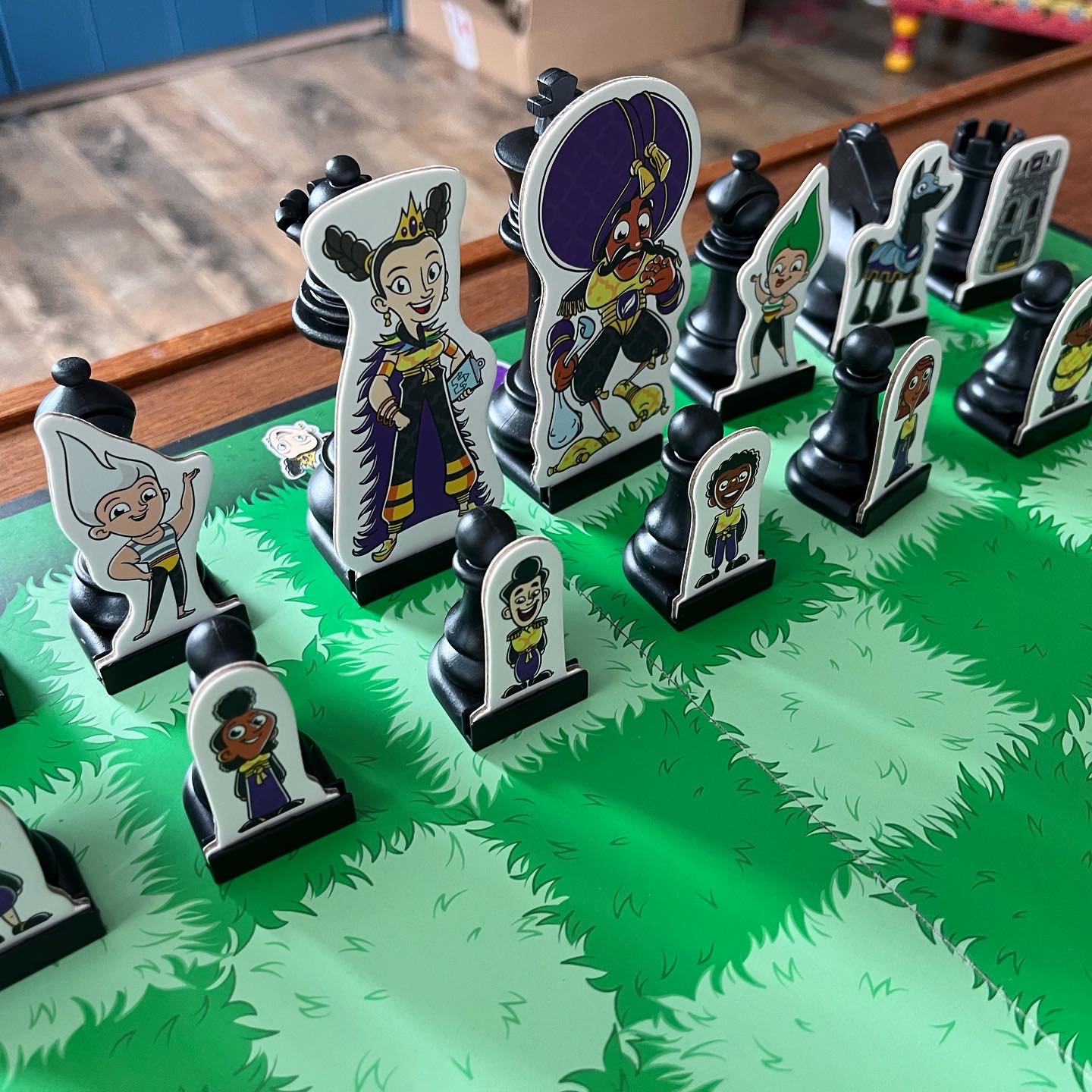
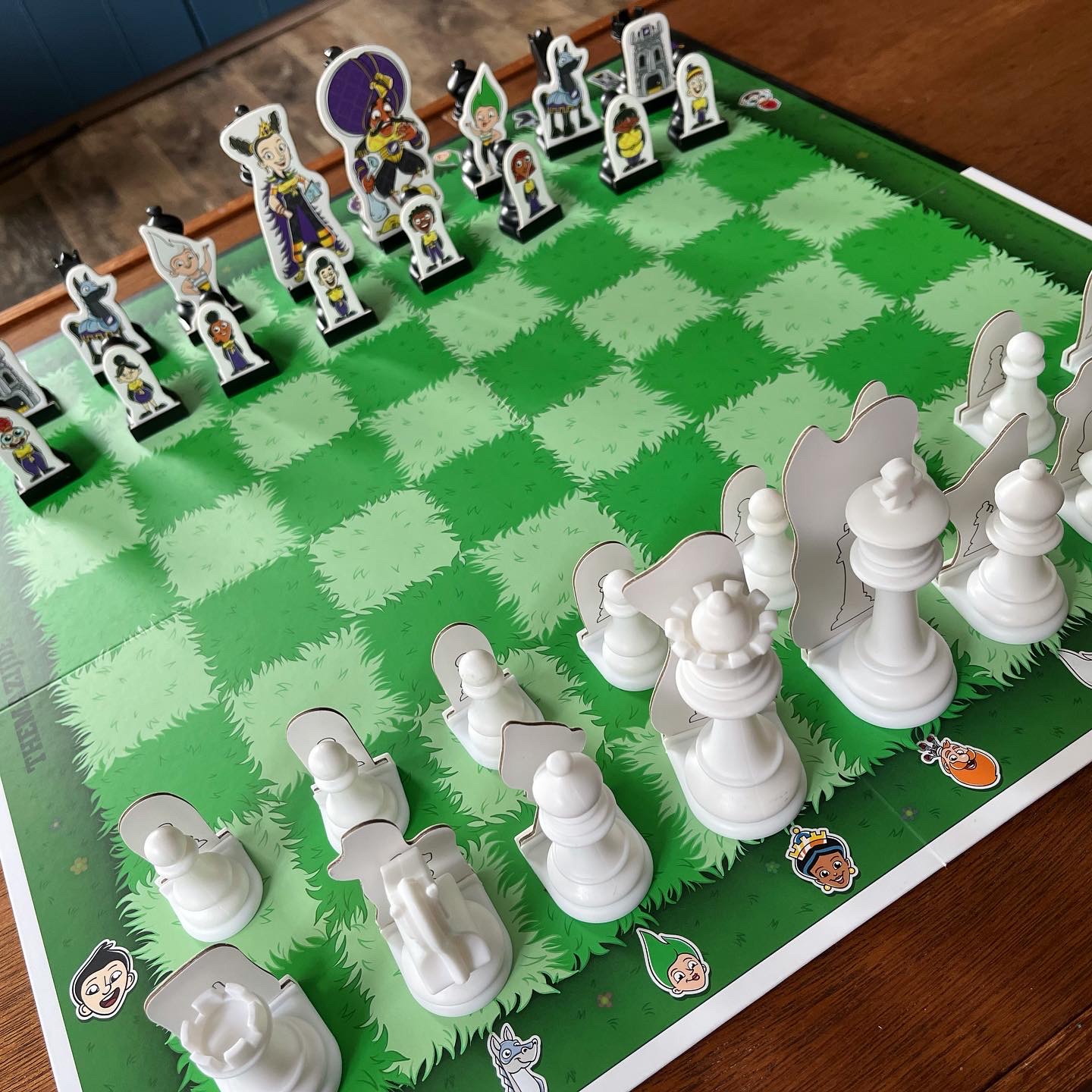
Besides the story and the rules of each piece, the booklet also contains several minigames/games for each chapter. Often these minigames use previously introduced pieces and the cardboard tokens in addition to the newly discovered playing pieces. In each case, the minigames focus on repeating the movements of the pieces as much as possible. Without giving away too much of the story, I will only mention an example from chapters 1 and 2. In those chapters, players have to pick up tokens (pizza slices for the white king and gems for the black king) by moving their pieces. Chapter 2 ends with a duel between the white and black king to see who manages to pick up all his tokens from the board first. The booklet recommends that parents/teachers/guardians repeat the story and mini-games of a chapter a few times before players move on to the next chapter. As players learn the different moves and rules in a narrative and repetitive way, they can remember the new information much better.
By the end of the Story Time Chess, young players know all the chess pieces and basic chess rules and are ready to best their parents. Of course, the game does not teach players all the details, strategies and/or nuances of the game, but it does give them the basics they can continue playing with. Who knows, after the Story of King Chess, young players might want to take chess lessons to write their own chess stories.
I think the Story of King Chess is a very good product. The production quality is good: the cardboard of the box, board, tokens and characters is very sturdy, the booklet is made of thick and glossy paper, the hard plastic chess pieces are huge and the illustrations are colourful. The stories are not always exciting and are very childish, but that suits the target audience perfectly. The Story of King Chess allows children to learn through play. Playing and learning? Checkmate!
